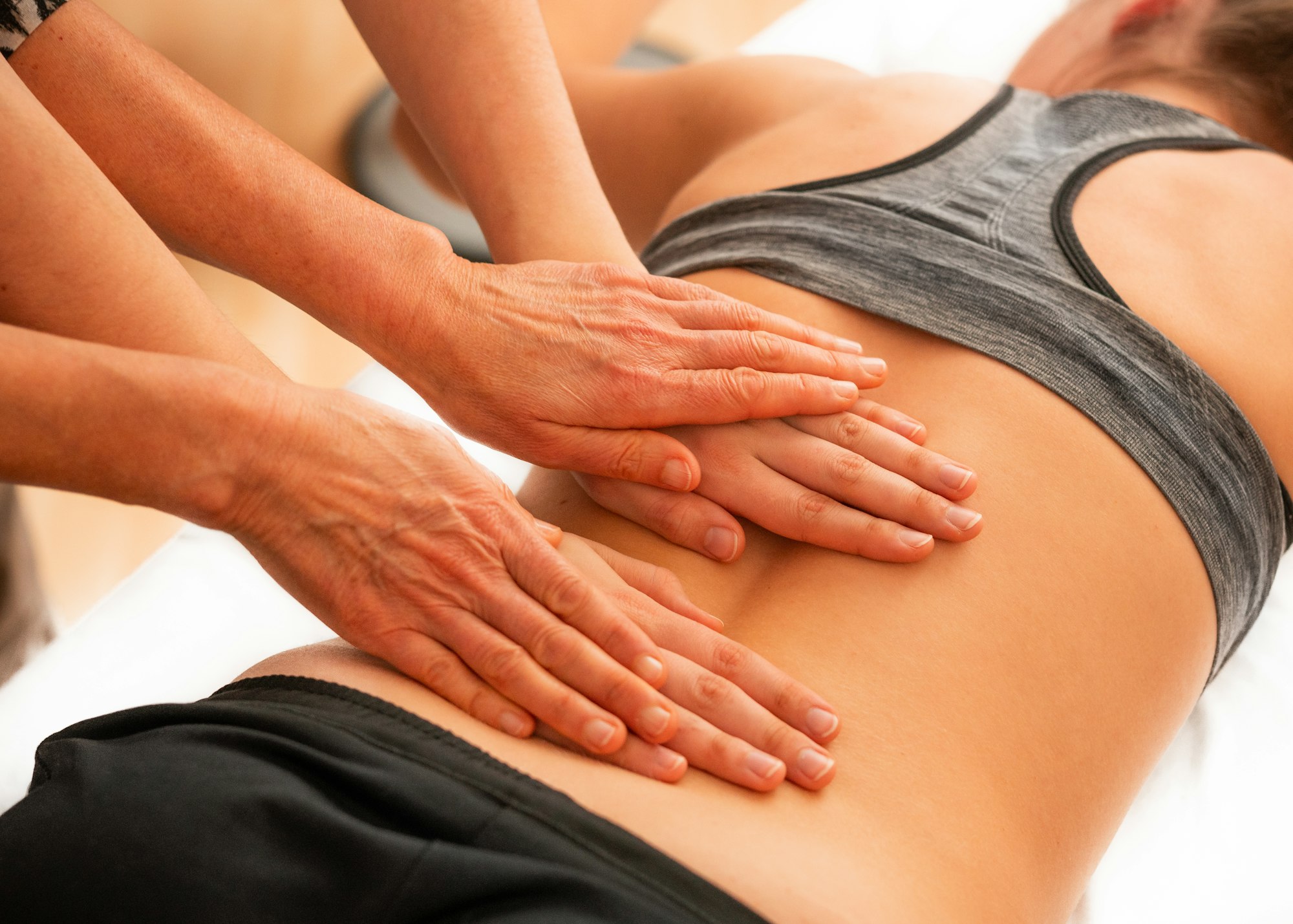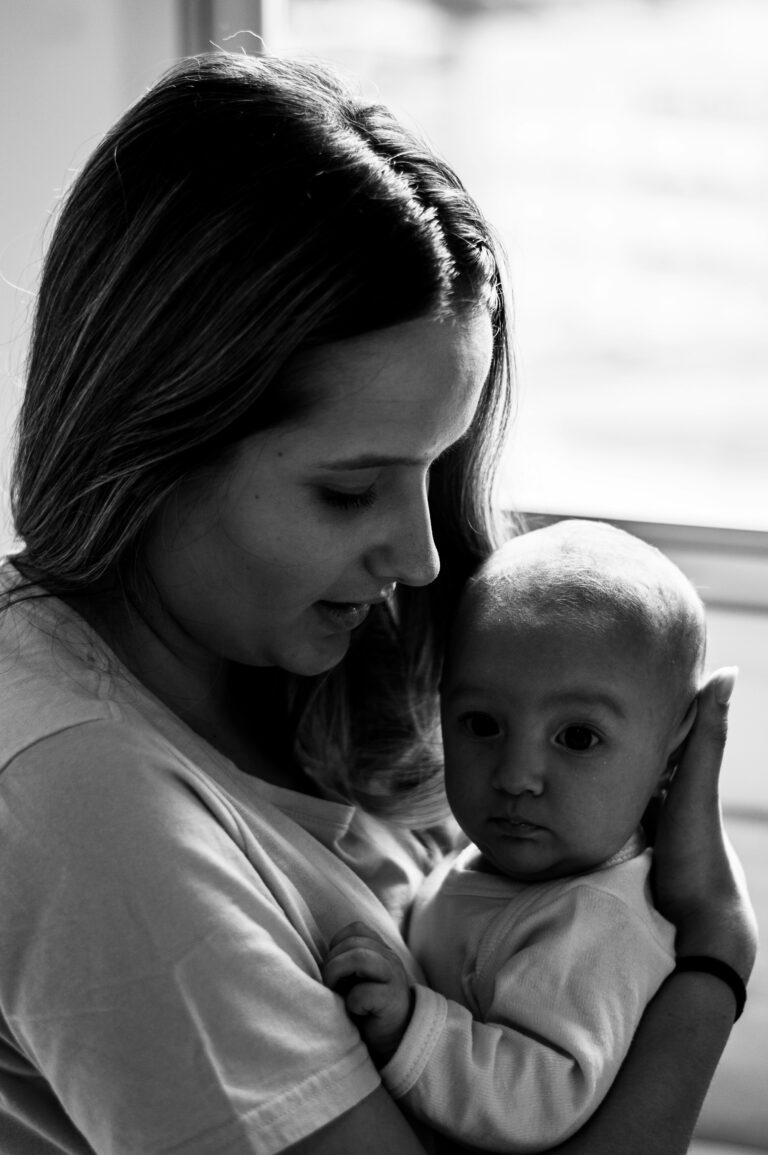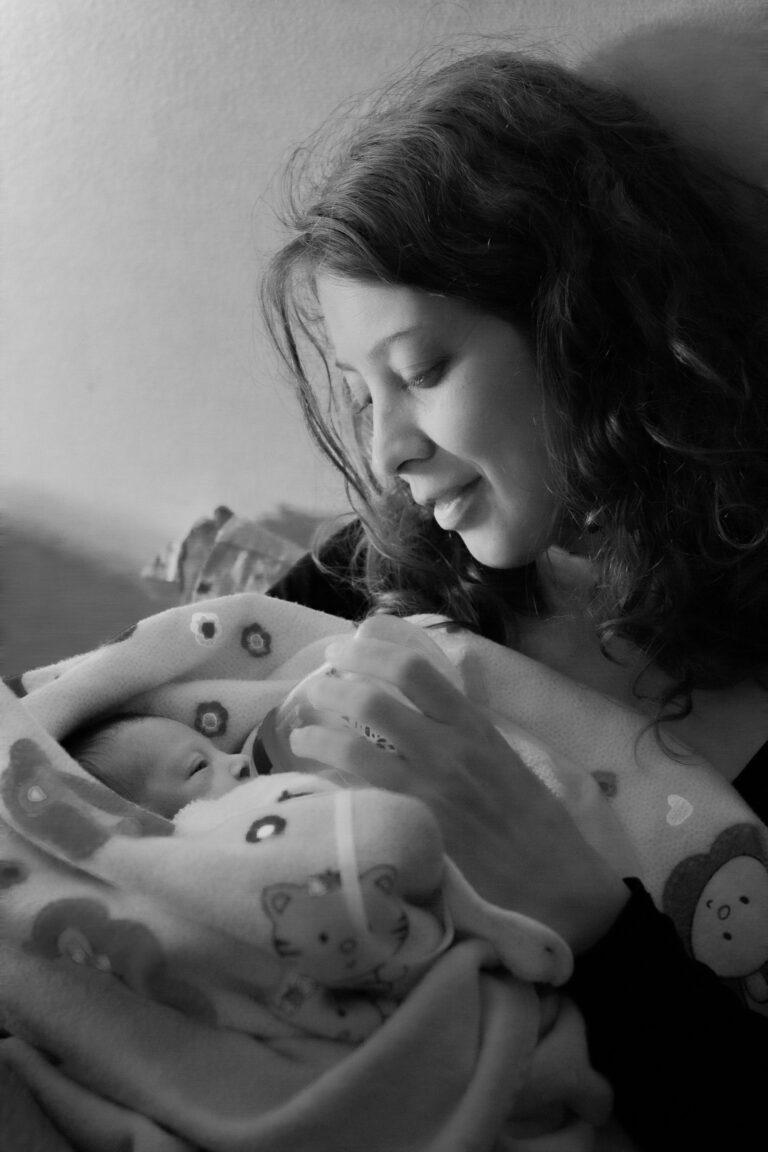Welcoming a baby brings an upheaval of daily rhythms and physical sensations, with your body juggling fatigue, fluctuating hormones, and unfamiliar aches. That tender pull at your lower back during late-night feeds, the heavy sensation in your pelvis, or the persistent headache that seems to blur the brightest moments—these aren’t rare occurrences after birth. Many parents, keen to rediscover comfort and energy, begin to explore solutions beyond traditional postnatal care. Postpartum osteopathy surfaces as a holistic approach, promising gentle support for recovering bodies and minds. How does this approach differ from the care offered by physiotherapists or chiropractors, and which symptoms or conditions can truly benefit from these tailored hands-on techniques? Let’s unravel the journey of postnatal recovery, spotlighting science, practical strategies, and the empowering knowledge that can support every parent—no matter their birth story.
Understanding Postpartum Osteopathy
Defining Postpartum Osteopathy
Postpartum osteopathy isn’t merely a set of manual routines—it’s a holistic, medical approach that recognizes the interconnected biomechanics of your postpartum body. At its core, this therapy harnesses gentle manipulation, joint mobilization, and tissue release to coax the body back toward equilibrium. What sets it apart? Postpartum osteopathy values the intricate dance between musculoskeletal structures and internal organs, always considering how ligaments, fascia, and nerves have adjusted to the demands of pregnancy and birth.
Scientific literature underscores how the pelvic girdle, lower back, and abdominal wall endure significant stress during pregnancy. Elevated relaxin and progesterone levels soften connective tissues, allowing adaptability for childbirth—but these adaptations persist for weeks, even months. This period of joint instability and muscular fatigue exposes the mother to a higher risk of pain or dysfunction. Postpartum osteopathy meticulously targets these ongoing changes, seeking to restore healthy mobility and function while supporting emotional adaptation during the new parenting phase.
Unique Features Compared to Other Approaches
Wondering how postpartum osteopathy stacks up beside physiotherapy or chiropractic care? Where physiotherapy champions tailored exercise regimes and muscle retraining, and chiropractic is well-known for resolute spinal adjustments, osteopathy chooses gentleness and whole-body integration. Expect soft tissue work, slow joint mobilizations, and sometimes even cranial osteopathy, which applies subtle techniques focusing on the nervous system and cranial bones. Unlike regular massage therapy, which relaxes muscles without addressing deeper misalignments or scar tissue, postpartum osteopathy shines in its comprehensive care for mothers experiencing persistent pain, postural imbalances, or the aftermath of delivery trauma.
The Postpartum Body: Physical and Hormonal Adaptations
Exploring Bodily Changes After Birth
No two postpartum experiences are identical—yet, the physical and hormonal upheavals share common threads. Following delivery, the body remains steeped in hormones like relaxin, preserving joint laxity. This translates into pelvises that may ache, hips that shift unexpectedly, and muscle groups—particularly the core and pelvic floor—still strained from accommodating a growing baby and the force of labor.
These shifts bring more than just aches; you may notice fluctuations in emotional state, stress, or sleep quality, often amplified by the sheer demands of caring for a newborn. Muscle fatigue, odd twinges near scar tissue, or persistent lower back pain often prompt one lingering question: Is this normal? Typically, these symptoms are transient, yet they deserve medical attention if recovery lags or discomfort intensifies.
Addressing Common Discomforts
Muscular and joint pain in the pelvis and lower back, an overwhelming feeling of pelvic heaviness (especially after vaginal delivery), or headaches related to sleep deprivation—these experiences are almost like badges of new parenthood. Some mothers may contend with discomfort near scar sites after a cesarean section or episiotomy, sensitized tissue lingering long after healing. Others notice issues like mild urinary incontinence, hemorrhoids, or simply a sense that their body is “out of sync.” Postpartum osteopathy steps in, offering targeted relief that aims to restore both physical and psychological comfort.
The Science and Practice Behind Postpartum Osteopathy
Key Benefits and Clinical Objectives
The priorities of postpartum osteopathy are clear—realign and reawaken the body’s innate capacity for recovery. Specific therapeutic goals include:
- Restoring pelvic and spinal mobility: Carefully mobilizing the sacroiliac joints, lumbar region, and even coccyx to relieve tension and restore unrestricted movement.
- Assessing and rehabilitating pelvic ligaments: These structures, often overstretched during pregnancy and delivery, can be gently guided back to function, minimizing ongoing pelvic pain.
- Supporting organ repositioning: The uterus, bladder, and intestines do not simply return to pre-pregnancy position without guidance; postpartum osteopathy offers visceral manipulation to aid this natural transition.
- Freeing the diaphragm and ribcage: By improving respiratory mechanics, fatigue and postural issues connected to restricted breathing can decrease.
- Managing scar discomfort: Carefully mobilizing tissue at surgical or perineal scar sites, reducing sensitivity and promoting pliability.
Medical research demonstrates a tangible reduction in low back pain and pelvic discomfort following manual osteopathic treatment. While more rigorous trials are on the horizon, early findings indicate that individualized therapy, focused on both the musculoskeletal and emotional aspects of recovery, can dramatically enhance well-being.
Bridging Physical and Emotional Wellness
Recovery is not only a physiological process. Emotional turbulence—a mix of euphoria, exhaustion, anxiety, and adaptation—often underpins the transition to parenthood. Osteopathic sessions intentionally create a supportive environment, giving parents space to release tension, ask questions, and develop self-care strategies they can integrate into demanding routines. This multidimensional approach, which spans the physical and psychosocial spectrum, sets postpartum osteopathy apart as a tool for holistic healing.
Osteopathic Techniques: Clinical Tools and Self-Care
Range of Manual Interventions
Children may arrive with a dramatic entrance, but rehabilitation relies on gentle precision. In a session, expect methods such as:
- Soft tissue massage and stretching, calibrated for freshly healed bodies and cautious about scar or surgical sites.
- Joint mobilization using controlled, subtle movements—no high-velocity thrusts involved.
- Visceral manipulation: Delicate movements reshaping the relationship between abdominal organs.
- Cranial osteopathy, which applies light, sustained pressure to the head or spine, designed to support the body’s stress response and systemic healing.
The clinical reasoning behind each maneuver is rooted in anatomical knowledge and physiological adaptation, always mindful of tissue healing stages and the presence of inflammation or infection.
Empowering Self-Management: Posture, Exercise, and Advice
Manual therapy is a pillar—but not the only one. Detailed postural education (think ergonomic breastfeeding positions, safe lifting, and optimal sleeping setups) can dramatically reduce repetitive strain. Bespoke exercise programs, emphasizing pelvic floor activation and gradual core strengthening, are also supplied. Often, gentle breathing work and pacing advice help prevent overexertion and set realistic expectations for incremental recovery.
Safety, Suitability, and Timing of Postpartum Osteopathy
When to Consider Treatment
Timing matters. For most, postpartum osteopathy can begin four to six weeks after delivery, or earlier if medically cleared. Special care is exercised if there have been surgical interventions—like cesarean section—or when tissue healing is incomplete. Contraindications include active infection, significant bleeding, or unhealed wounds. For these reasons, consultation with a healthcare professional or osteopath is advised before booking an appointment.
Postpartum osteopathy can benefit a wide array of individuals, regardless of delivery method (vaginal, assisted, or surgical) or whether symptoms appear mild or persistent.
Extending Osteopathic Care: Partners Matter Too
Supporting the Whole Parental Unit
Partners are often silent carriers of tension—physical and emotional. From awkward postures during long nights to compensatory aches from babywearing, their bodies can also become accident-prone. An osteopathic session for partners offers more than mere relaxation; it provides strategies for safer movement, ergonomics, and resilience, equipping the whole family for the rigors of early infancy.
What to Expect During a Postpartum Osteopathy Appointment
The Course of a Session
First, expect a thorough conversation about your pregnancy, birth, and ongoing symptoms. Next, your osteopath will conduct a gentle evaluation, assessing biomechanics, posture, scars, and muscular patterns. Then follows a combination of gentle manual techniques, sometimes paired with at-home advice and exercise recommendations.
People often describe feeling lighter, with eased pain and a subtle recalibration of posture or movement—sometimes even after one appointment, though lasting benefits typically emerge after several sessions.
Frequency and Integration With Other Care
No single formula exists for visit frequency. Some parents feel an immediate difference after one or two sessions; others require ongoing support as recovery unfolds. Importantly, postpartum osteopathy can be coordinated with pelvic physiotherapy, mental health support, or general medical follow-up, forming an integrated recovery network.
Symptoms and Conditions Addressed by Postpartum Osteopathy
Typical Issues Helped by Osteopathic Care
Commonly addressed complaints include:
- Persistent lower back or pelvic pain.
- Tension or soreness in the abdomen and spinal muscles.
- Headaches linked to postural strain or sleep deprivation.
- Discomfort or tightness originating from scar tissue.
- Sensations of pelvic heaviness, weakened core strength, or abdominal separation (often called diastasis recti).
By mobilizing scars, supporting tissue health, and strengthening the pelvic floor, postpartum osteopathy can reduce discomfort and optimize tissue recovery.
Support for Emotional Well-being
Rebalancing the body isn’t only about muscles and bones. Osteopathy’s influence on the nervous system can lessen anxiety and facilitate emotional stability—a vital advantage as postnatal moods ebb and flow.
The Scientific Context: What Research Tells Us
Clinical evidence continues to accumulate. Studies have highlighted the efficacy of osteopathic manual therapy for pelvic girdle pain, postpartum low back pain, and associated biomechanical dysfunctions—demonstrating measurable improvements in pain, posture, and functional outcomes. Patient satisfaction trends high, reflecting the individualized, hands-on approach. Nonetheless, researchers emphasize the need for standardized treatment protocols and longitudinal research to confirm and refine best practices.
Selecting a Postpartum Osteopath: Experience Matters
Guidelines for Choosing Your Practitioner
Not all osteopaths have the same expertise. Look for professionals registered with certified bodies, and ask about training in women’s health and postpartum care. It’s appropriate—encouraged, even—to inquire about treatment techniques, safety measures for recent births, and how sessions will be tailored. Recommendations from trusted healthcare providers or peer networks can be invaluable.
Preventive Strategies and Ongoing Health
Prioritizing Long-term Well-being
Consistent attention to musculoskeletal health has benefits that extend well beyond the fourth trimester. Regular postpartum osteopathy sessions may optimize alignment, reduce lingering pain, and encourage sustainable movement patterns—especially valuable if considering future pregnancies. Preconception osteopathic check-ups can also build a foundation of strength and resilience, better preparing the body for the next adventure in parenthood.
Incorporating advice on posture, core activation, and ergonomic routines ensures that daily parental duties—lifting, carrying, rocking—are less likely to foster chronic discomfort.
Key Takeaways
- Postpartum osteopathy provides gentle, individualized support that addresses not only physical recovery but also emotional adaptation after childbirth.
- Techniques span manual therapy, postural guidance, personalized exercise, and specialized scar care, each adjusted to your unique birth recovery and parenting routine.
- The evidence base supports benefits for back and pelvic pain, but comprehensive relief often emerges through a holistic and coordinated recovery plan.
- Partners may also benefit from osteopathic attention to their own musculoskeletal health, promoting broader family well-being.
- Choosing a qualified, experienced practitioner is key—never hesitate to ask questions relevant to your recovery and comfort.
- Numerous supportive resources and professionals are available to accompany parents. For personalized advice and free child health questionnaires, you can download the Heloa app.
Parenting after birth is both an immense challenge and a transformative journey. Quality medical information and skilled support empower you to shape a recovery that is both balanced and sustainable, helping you rediscover comfort and confidence in the midst of change.
Questions Parents Ask
Is postpartum osteopathy only recommended for mothers, or can fathers benefit from it as well?
While postpartum osteopathy is often associated with supporting mothers in the months following childbirth, fathers (and partners more generally) can also find value in these sessions. Adjusting to caring for a newborn can put unexpected strain on the body, especially with frequent lifting or new routines that challenge posture. Osteopathic care can help alleviate any resulting muscular discomfort and guide the whole family in practicing gentle, supportive movements together.
How soon after delivery can someone seek postpartum osteopathic care?
You may wonder about the best moment to start postpartum osteopathy. In most situations, parents can consider consulting an osteopath about four to six weeks after giving birth. However, this timing can vary depending on individual recovery, especially if there was a cesarean or any complications. There’s no rush—take your own pace, and don’t hesitate to check in with your healthcare provider or an osteopath trained in postnatal care for personalized advice.
Can postpartum osteopathy help with emotional well-being as well as physical recovery?
Absolutely. Many parents note not just relief from pain or discomfort, but also an improved sense of relaxation and emotional balance after sessions. Osteopathic care pays attention to the body as a whole, which includes recognizing how physical discomfort and emotional ups and downs can be closely linked during the postpartum period. Taking a moment for gentle, attentive care offers space for both body and mind to recalibrate.









